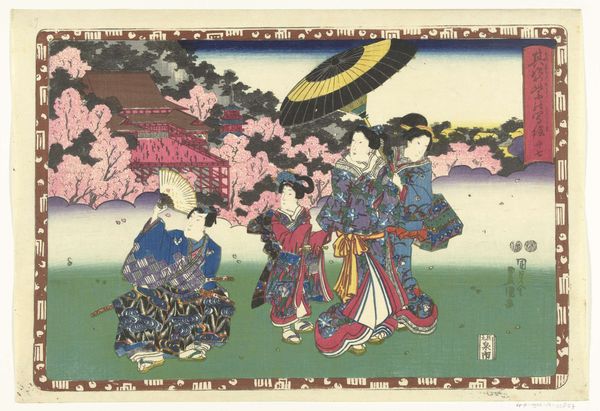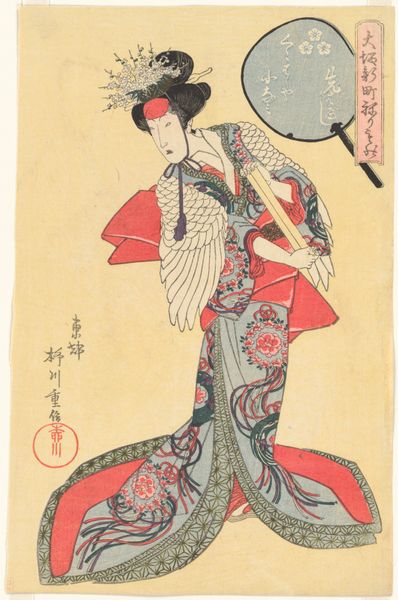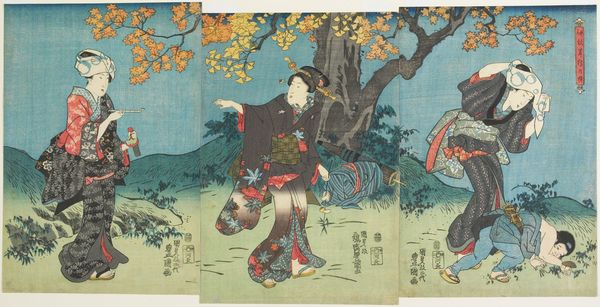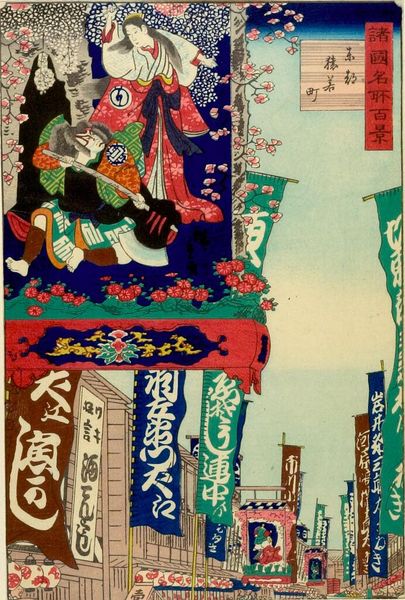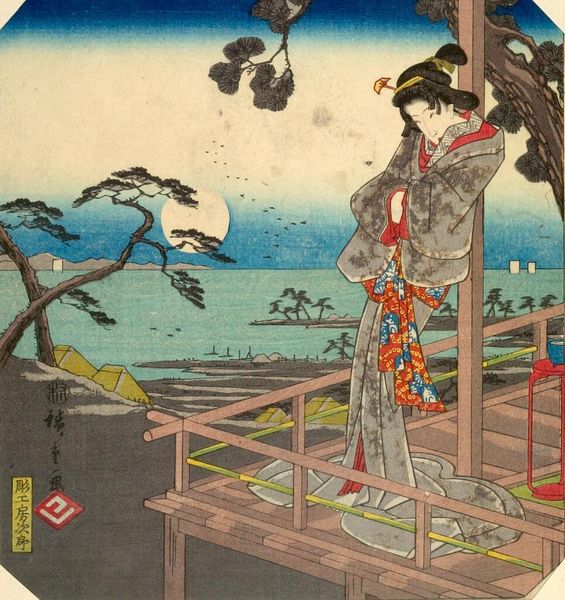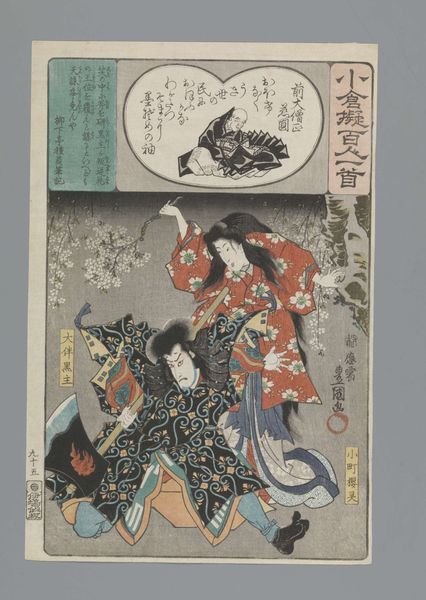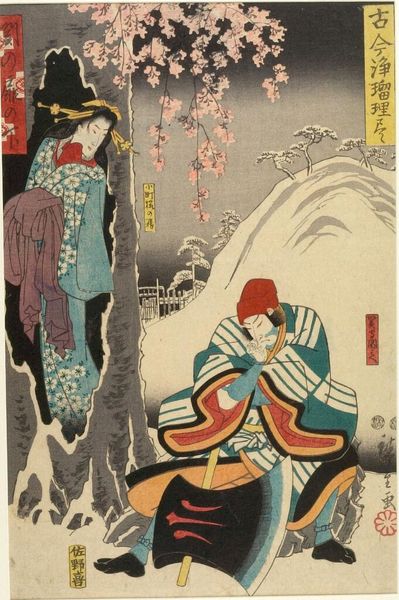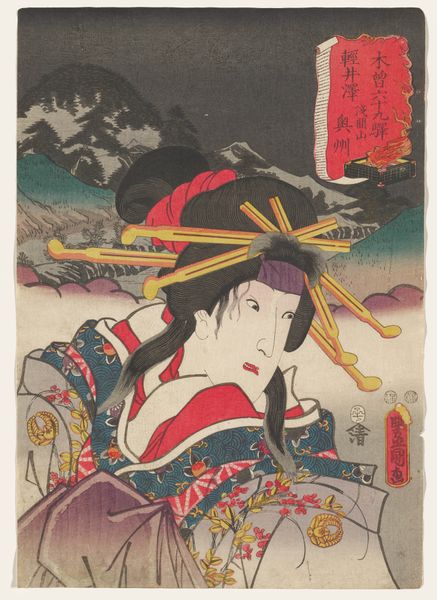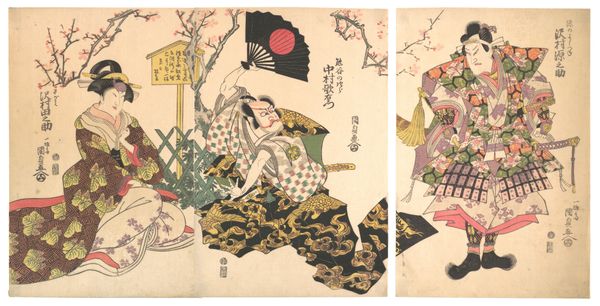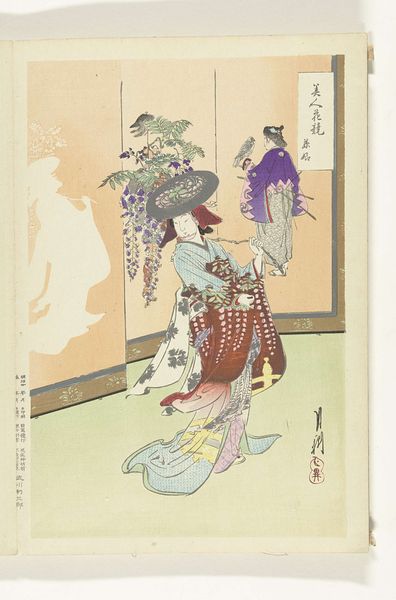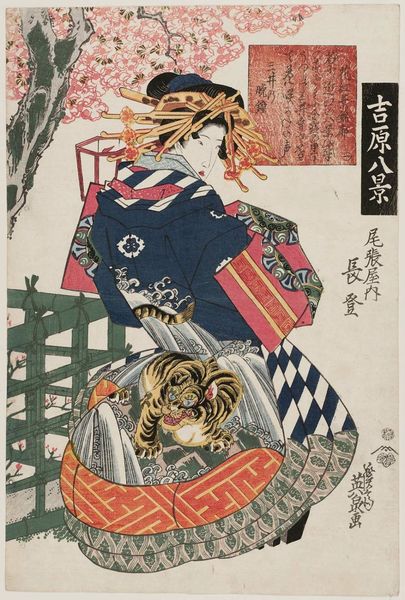
Copyright: Public domain
Curator: Here we have "Princess Sakura - Setsu Getsu Ka" a woodblock print created around 1884 by Yōshū Chikanobu. Editor: My first impression is the somewhat melancholic feeling it evokes. Despite the vibrancy of colors and detailed scenery, the central figure has a downcast gaze, suggesting a deeper emotional complexity. Curator: Absolutely. Let's consider the socio-political backdrop of Meiji-era Japan, when this work was created. As Japan opened its borders and rapidly modernized, artists like Chikanobu grappled with cultural preservation amidst Western influences. This print exemplifies ukiyo-e techniques combined with contemporary sensibilities. Note how the print-making production line – block carvers, printers, and the artist all collaborated on each print, representing a collective labor. Editor: That’s a fantastic point. Looking at the image through a postcolonial lens, we see the tensions inherent in the era’s pursuit of modernity, how identity becomes performative, negotiating tradition and the future. I'm drawn to the contrast between the opulent dress and accessories of Princess Sakura and the subdued environment above where the artisan or servant quietly performs their labor, highlighting the socio-economic dynamics. The pagoda against the landscape, too, contrasts tradition with emergent culture. Curator: Exactly. Also consider the physical materials, the woodblocks themselves and their production, the paper, the pigments. These prints were accessible; it wasn’t rarefied oil painting, but a readily made object meant for a larger, emerging consumer class. Chikanobu produced a commodity here as much as a cultural representation. Editor: I agree. The composition itself is striking—dividing the image into distinct realms. The lower portion showcases the detailed depiction of Princess Sakura and the scenic view, while the upper section includes, I assume, other social activities in a single scene; it’s complexly layered to deliver the whole spectrum. And is that Mount Fuji in the background? Its placement grounds the image firmly in the national consciousness. Curator: It is, yes. By combining idealized images of feminine beauty, class structures and culturally significant locations, the artist tapped into a national narrative undergoing profound changes due to international influence and technological progress, while the methods of production— labor-intensive techniques and widespread distribution of these prints show a fascinating intersection between cultural artifact and material commodity. Editor: Considering its context, this print feels less like a simple representation of beauty and more like a visual discourse on national identity during a crucial historical period. Curator: I couldn't agree more; it showcases a fascinating insight into production during a transformative era in Japanese history. Editor: Ultimately it urges us to understand how the creation and representation of such figures in art serve deeper social, political, and cultural roles.
Comments
No comments
Be the first to comment and join the conversation on the ultimate creative platform.
